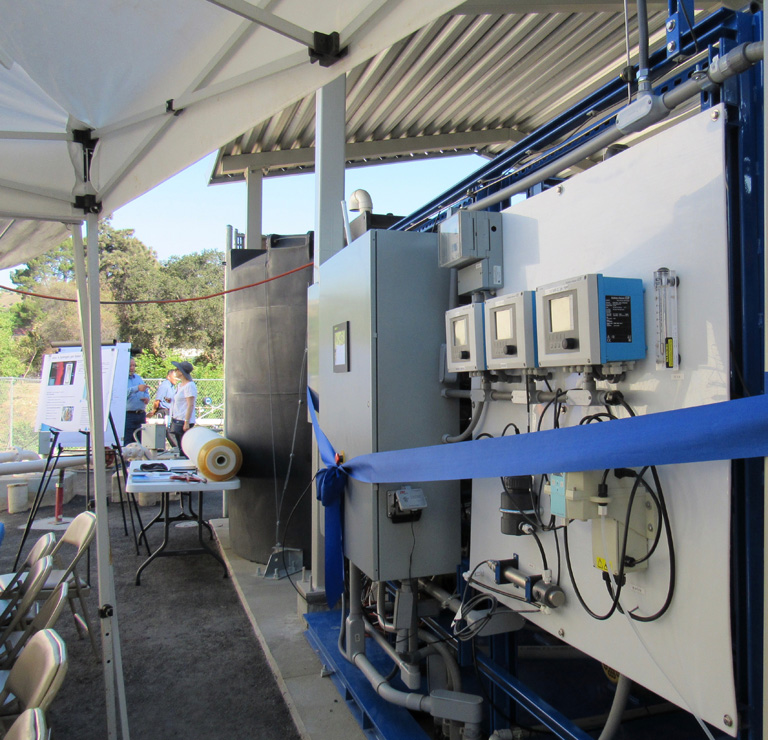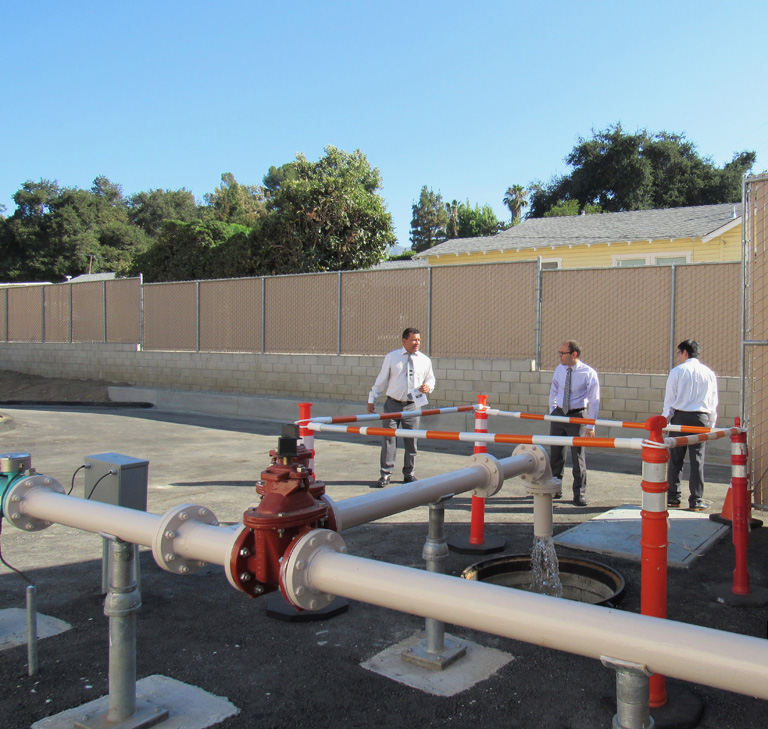
Technology that removes nitrate from water has allowed the reactivation of a local well.
By Mary O’KEEFE
Last Thursday, July 26, Crescenta Valley Water District held a dedication ceremony for the reactivation of its Well No. 2 located at Lowell and Honolulu avenues. It was a joint effort between CVWD, Los Angeles County and the City of Glendale. The reactivation was also made possible due to advanced technology implemented by a California company and an invention by an Arizona State University professor.
Well No. 2 was originally drilled in 1922 by then Crescenta Mutual Water Company.
“From 1949 to 1976, the well was in service,” said David Gould, CVWD district engineer.
At the time, it averaged about 85-acre feet of water annually.
“High nitrate levels took [the well] out of service in 1976,” Gould added.
The health department updated regulations regarding nitrate levels and at the time there was no technology that could efficiently take the nitrate out of the water. Gould said in 2013 and 2014 CVWD began reaching out to engineers and scientists to discuss how to reduce the nitrate and to look for a system that would work.
In 2015, Gould applied for a statewide grant from funds approved through Prop 84. The grant was submitted in August 2015 and was approved in November of the same year. The CVWD was awarded $705,775. The cost to CVWD was $2,250,000.
“The well will give us an additional 240-acre feet of water per year,” said Nemesciano Ochoa, CVWD general manager. “That is about 78 million gallons of water per year.”
CVWD partnered with APTwater, a California-based company whose purpose, according to its website, is “…the development, commercialization and implementation of water treatment technologies meeting the APTwater company standard of Clean Water no Waste.”
The technology used to remove nitrate from groundwater from Well No. 2 was invented by Professor Bruce Rittmann of Arizona State University. The invention garnered the professor the Environmental Engineering Excellence Award from the American Association of Environmental Engineers in 2011. Rittmann collaborates with APTwater.
Rittmann’s system is a hydrogen-based membrane biofilm reactor. During the reactivation ceremony, representatives from APTwater, Terry Applebury and David Friese, showed those in attendance the slender metal pipe that had been used in the past to extract nitrate from water and new net-like material that is used now. It removes contaminants, like nitrate, chromate, selenate, perchlorate and trichlorethene, from water.
Chen Zhou, a research scientist and assistant to Rittmann, was at the ceremony. Zhou has been working for 11 years on this research with the professor.
“This is specific for nitrate removal,” said Zhou.
The scale used in Well No. 2 is larger than those used in the lab at ASU, but it works on the same principle.
“This use [on Well No. 2] is in the top two or three commercial scale [plants] we have used,” he said. “This is a masterpiece in my eyes.”
Ochoa said getting Well No. 2 up and running again was an example of how government entities, private companies and municipalities can work together.
He said, “The dedication of this facility actualizes CVWD’s commitment to utilizing local water resources here in the Verdugo Basin and reducing our dependence on imported water.”

